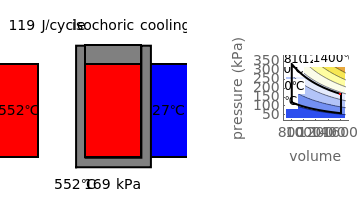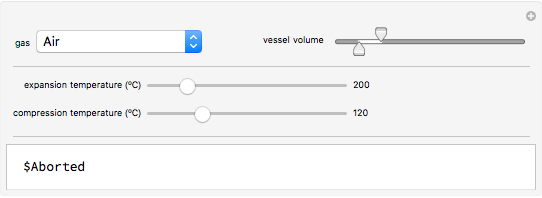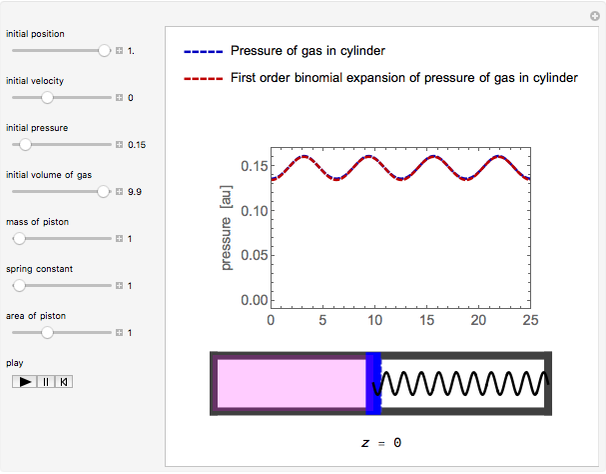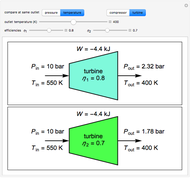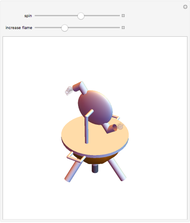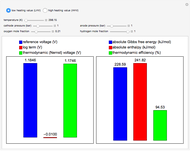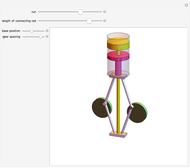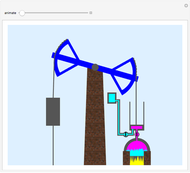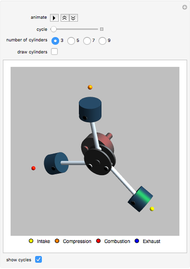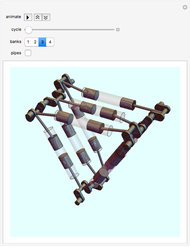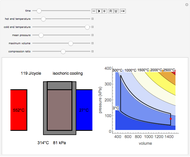Simple Stirling Engine

Requires a Wolfram Notebook System
Interact on desktop, mobile and cloud with the free Wolfram Player or other Wolfram Language products.
A Stirling engine is based on a type of thermodynamic cycle that exploits a temperature difference to convert heat into mechanical work. The engine operates by performing several transformations on a working fluid (in this case, an ideal gas). This Demonstration shows a theoretical engine with the working fluid contained in a cylinder with a piston that can be transferred between a hot and cold reservoir. Although the one-cylinder model is useful to calculate properties of the cycle, practical engines usually have two cylinders (one hot and one cold) that exchange the fluid. On the left is the simple model with the temperature and pressure of the working fluid, the type of transformation being applied to the gas, and the amount of work energy extracted per cycle. On the right side is a pressure-volume diagram that shows the states of the working fluid as it passes through its cycle. A red dot shows the location of the current state.
Contributed by: Robert Campion (June 2012)
Open content licensed under CC BY-NC-SA
Snapshots
Details
detailSectionParagraphPermanent Citation
"Simple Stirling Engine"
http://demonstrations.wolfram.com/SimpleStirlingEngine/
Wolfram Demonstrations Project
Published: June 3 2012
